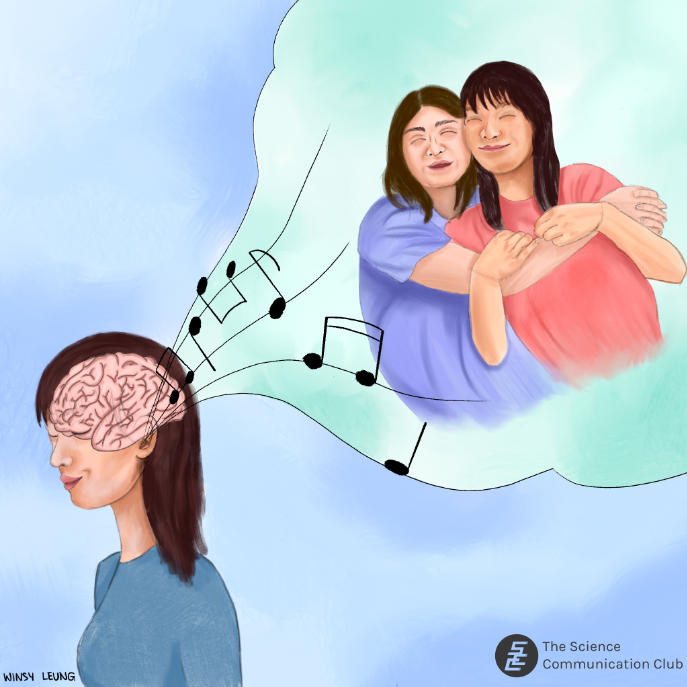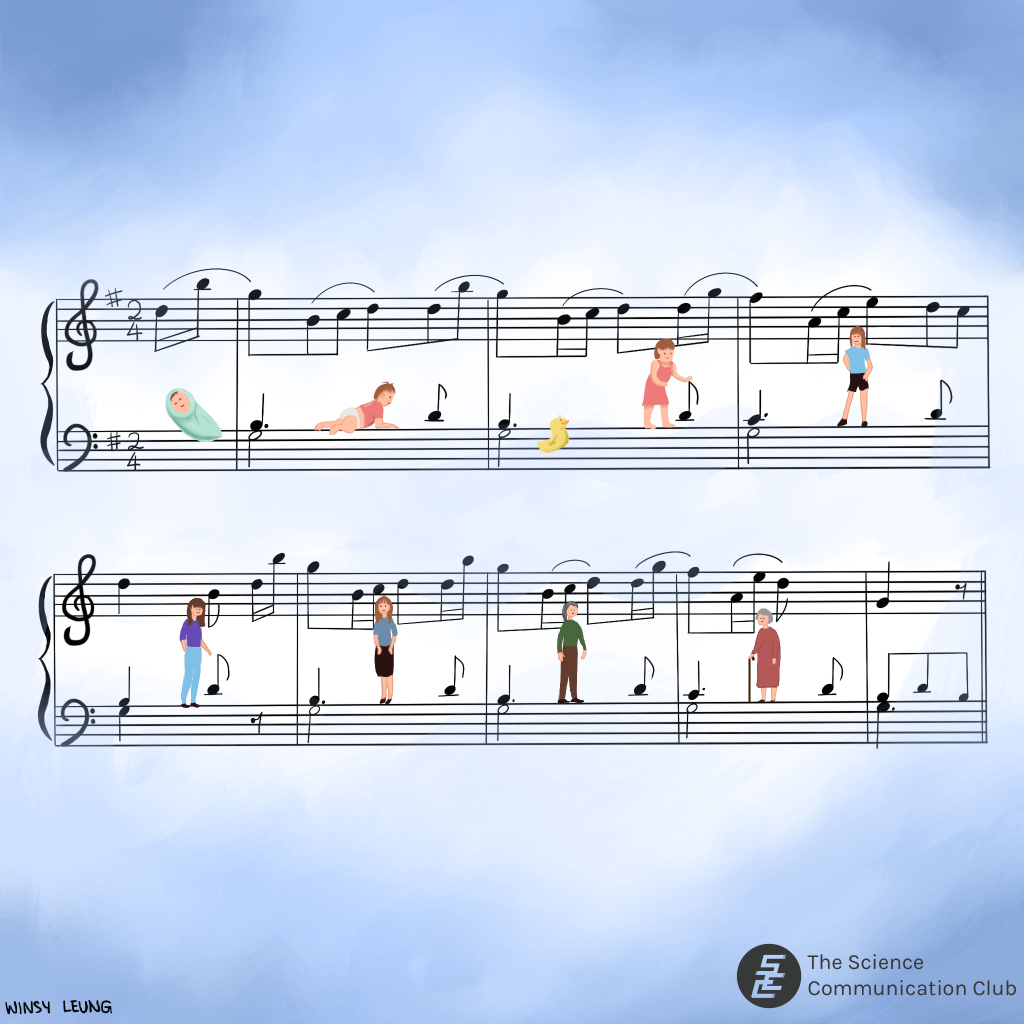
Written by Anita Mazumdar-Moscato
Illustrated by Winsy Leung
You’re at a party. It’s pretty relaxed, people are chatting and you’re sitting in the living room with a friend. All of a sudden, “Last Friday Night” booms through the speakers. In a second, everyone is on the dance floor.
Yeah, we danced on tabletops, and we took too many shots
Think we kissed but I forgot
Last Friday night
Throwback after throwback plays, and by the end of the night your throat hurts from singing and you’re giddy from laughing with your friends.
But what makes just one song capable of completely shifting the mood of so many people for an entire night?
That’s a great question — it all has to do with the effect of nostalgia!
Nostalgia and the Mystery of the “Reminiscence Bump”
Feeling nostalgic is something everyone can relate to, but this phenomenon isn’t extensively researched in scientific disciplines. Swiss physician Johannes Hofer actually thought the feeling was a neurological disease, dubbing it “nostalgia” — a compound of the Greek words nostos (return) and algos (pain)1. Nowadays, while not considered a medical concern, the nostalgia that comes along with recollecting your past is associated with positive or bittersweet feelings. Studies have shown that nostalgia has positive effects on us, resulting in decreased feelings of loneliness and depression, a boost in self-esteem, and an overall sentiment of connectedness with those who share nostalgic memories1. Nostalgia has even been utilized in “reminiscence therapy,” a form of therapy for adults that relies on evoking nostalgic memories1.
Related to the nebulous concept of nostalgia is the even more mysterious phenomenon of the “reminiscence bump,” the trend in which we remember more events from our late adolescence and early adulthood than any other period of our lives2. A study by researchers at the University of Leeds that explores the reminiscence bump suggests that it is essential to our creation of a stable self2. This is a two-way street: our memories provide context for who we are presently, and we retrieve certain memories when we want to remind ourselves of who we have been3. However, these autobiographical memories are not evenly spread throughout our lives — a large portion of them come from the period that is characterized as the reminiscence bump. We build our lives as narratives, and the reminiscence bump is the foundation on which we construct our sense of self, the period we refer back to for information on who we are — in other words, it’s the time when you become you.

Nostalgia + Music = Throwbacks!
Like “Last Friday Night,” throwback songs are songs we listened to during that formative period in our lives that makes up the reminiscence bump. As they’re intrinsically linked to a time in our lives when we were having the time of our lives (by Pitbull feat. Ne-Yo), throwbacks hold a power over us that no other music can quite match. As we go through the years between late adolescence and early adulthood, we are simultaneously undergoing rapid neurological development — thus, we react to music more intensely now than we ever will after this period of development is over5, and the songs we associate with this time become memories in themselves:
“Hey There Delilah” brings to mind a younger you who wore skinny jeans, had side swept bangs, and dreamt about moving to New York one day.
When you hear the Cup Song, you automatically do that little clap cup thing that you learned during lunchtime with your friends.
Even though you’re not a dancer, you drop it low when Flo Rida and T-Pain tell you to.
You don’t think you’ve ever cried harder than you did when you watched the music video for “The One That Got Away.”
As you navigate this period of change, you are creating your own coming-of-age movie soundtrack — a personal teleportation device for your future self that will remind you of all the firsts you experienced, the friends you made, the emotions you felt, and the person you were — all of which will have shaped you into the person that you’ll have become.
So, take a look at the songs in your playlists — you never know which ones you’ll be showing your kids.
Sources:
- Oba K, Noriuchi M, Atomi T, Moriguchi Y, Kikuchi Y. Memory and reward systems coproduce ‘nostalgic’ experiences in the brain. Soc Cogn Affect Neurosci. 2016;11(7):1069-1077. doi:10.1093/scan/nsv073
- Rathbone CJ, Moulin CJ, Conway MA. Self-centered memories: The reminiscence bump and the self. Memory & Cognition. 2008;36(8):1403-1414. doi:10.3758/mc.36.8.1403
- Conway MA, Singer JA, Tagini A. The self and autobiographical memory: Correspondence and coherence. Social Cognition. 2004;22(5):491-529. doi:10.1521/soco.22.5.491.50768
- What happens to your brain under the influence of Music. Gizmodo. https://gizmodo.com/what-happens-to-your-brain-under-the-influence-of-music-5837976. Published December 16, 2015. Accessed October 21, 2022.
- Stern MJ. Why are we so nostalgic for music we loved as teenagers? Slate Magazine. https://slate.com/technology/2014/08/musical-nostalgia-the-psychology-and-neuroscience-for-song-preference-and-the-reminiscence-bump.html. Published August 13, 2014. Accessed October 21, 2022.